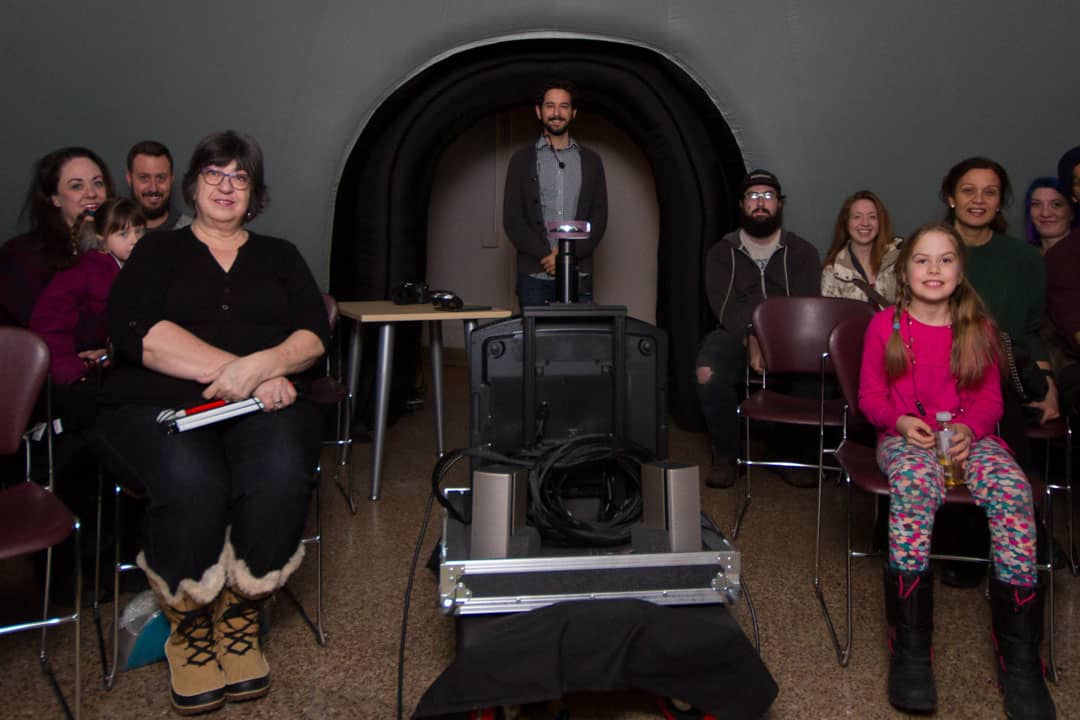“The heavenly bodies are nothing but a continuous song for several voices,” wrote seventeenth century German astronomer Johannes Kepler. In all likelihood, Kepler never would have dreamed that this beloved musica universalis could become a reality. Thanks to astrophysicist Dr. Matt Russo, the marvels of space now not only grace our eyes but our long-neglected ears as well.
Russo, currently a planetarium operator at U of T’s Dunlap Institute for Astronomy & Astrophysics and a professor at Seneca College, first stepped into the global limelight last May when he scaled the orbital frequencies of the TRAPPIST-1 star system into the human hearing range, creating an intersolar symphony.
Internationally recognized in print and on radio for this feat, he has since delved deeper into the burgeoning field of ‘space music.’ Our Musical Universe is his new planetarium show, featuring sights and sounds from every source imaginable in observable space.
“TRAPPIST-1 is the most musical solar system ever discovered, but the universe is full of musical harmony in many complex and beautiful ways,” wrote Russo. “From pulsating stars to waves in Saturn’s rings, I created Our Musical Universe to showcase the surprising musicality of the cosmos.”
Featured at the U of T Astronomy and Astrophysics planetarium, Our Musical Universe occurs irregularly and sells out remarkably quickly.
The planetarium is a small dome nestled in the basement of 50 St. George Street. The show begins with a familiar sight: the Toronto skyline, devoid of all light pollution, allowing the majesty of the cosmos to shine through.
Although breathtaking, starlit skies are not unique in planetarium shows. The true novelty of Our Musical Universe shines brightest precisely when it does not. It is in the dark that Russo begins to play the stars like a harpsichord.
“The goal is to help people experience the universe from a new and often surprising perspective, including the perspective of someone that relies more on audio than on visual information,” explained Russo. “The show was designed from the start with the visually impaired in mind. I wanted to create a show that would get everybody excited to experience the universe in a new way while opening the doors to people that would benefit the most from something other than the typical visual focus of astronomy education.”
The show spans from Toronto to the proverbial edge of the universe, with audio accompaniment along the journey — it might even be more accurate to describe the event as a symphonic experience with the occasional visual embellishment.
Indeed, Russo is a celestial maestro who manages to convey distinctly alien sounds with notes that are eerily recognizable. All of this is accomplished with the most bizarre instruments imaginable; the ensemble boasts sounds from the aurora borealis to the rings of Saturn.
“Many seasoned astronomers are surprised by the sounds that were sitting in data, waiting to be heard,” explained Russo. “Some probes record electric signals in space and we can just feed these signals to a speaker; it’s like we’re plugging in a cosmic electric guitar.”
When considering things like cosmic electric guitars, it is no surprise that enthusiasm for the show is growing, as evidenced by the sold-out shows.
“It’s inspiring to see science outreach expand beyond its traditional boundaries and be accessible to more people,” said Ayush Pandhi, Symposium Co-Director for U of T’s Astronomy and Space Exploration Society. “I think the public is very interested in science, but scientific research often tends to have a barrier of entry in terms of understanding and availability and events like this go a long way in tackling that problem.”
The show is roughly an hour long and costs $10 per person.


